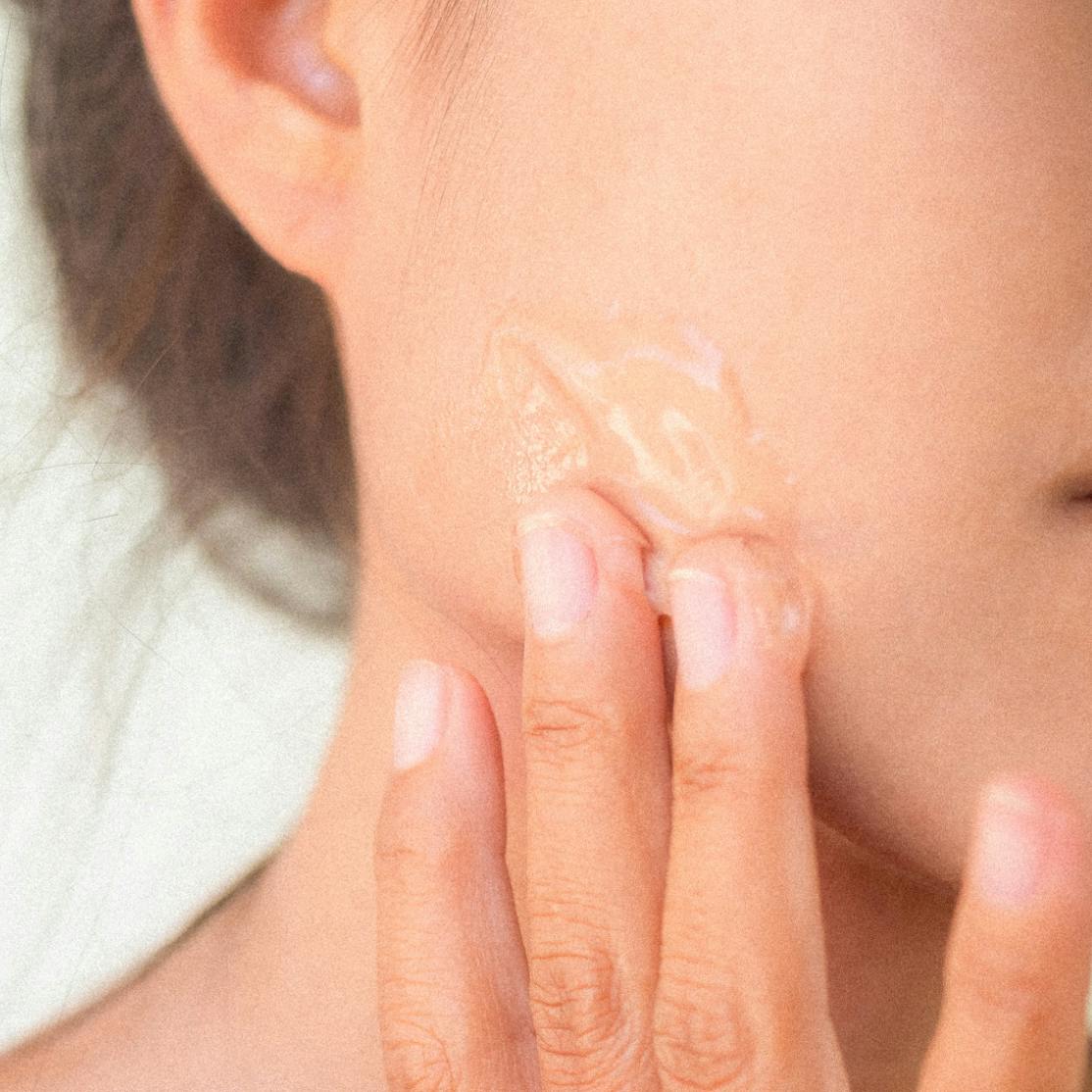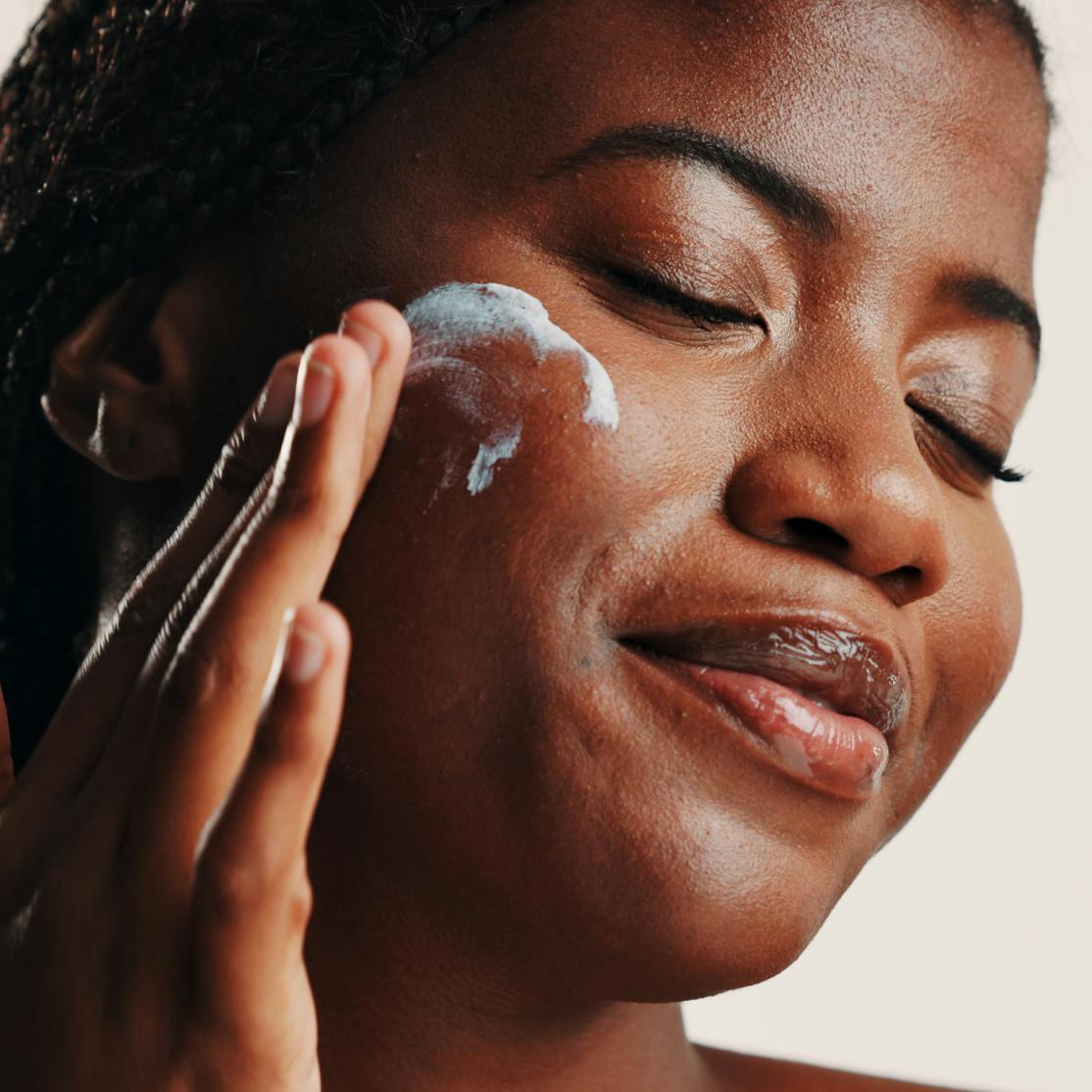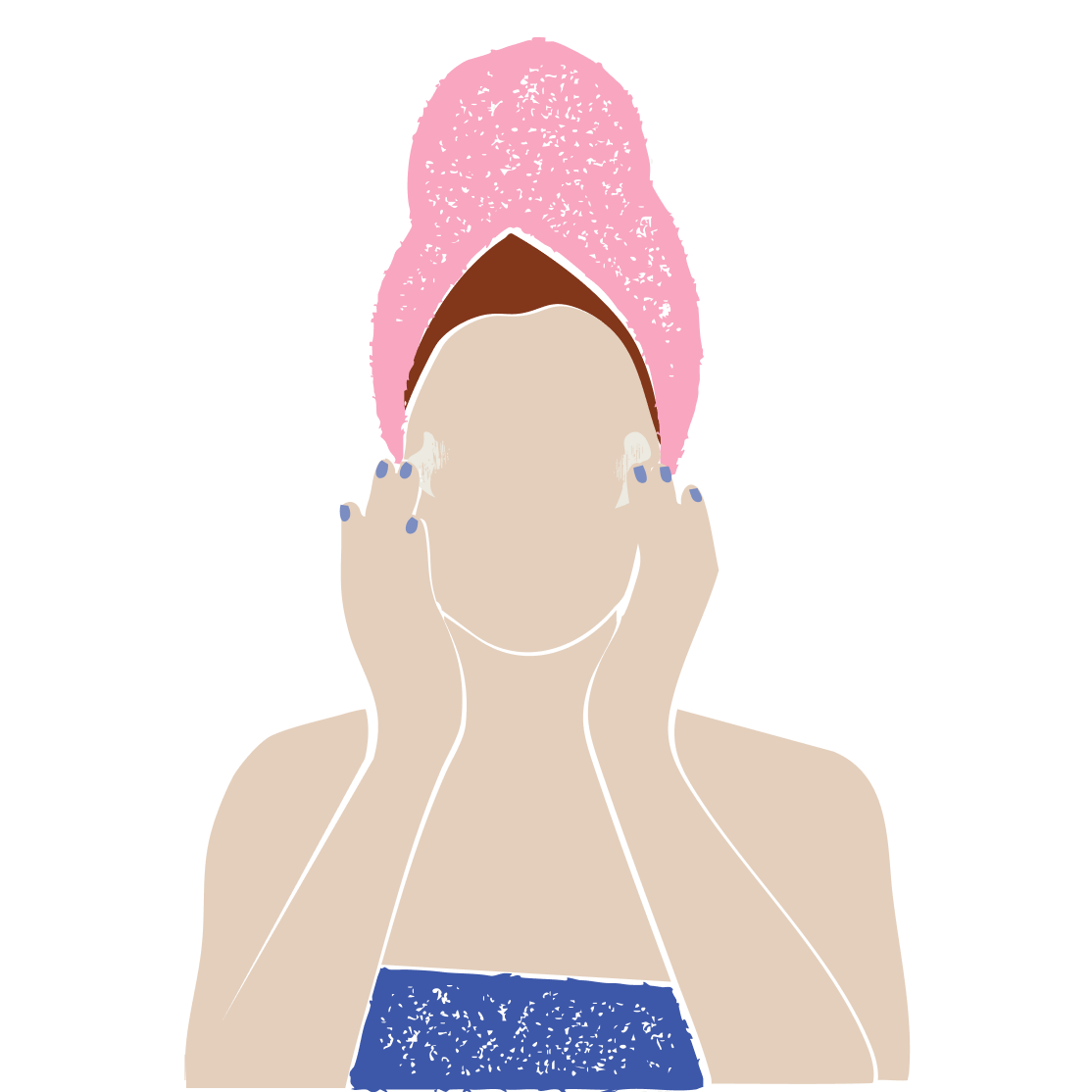Tretinoin gels or creams can be a valuable part of your skincare routine at any time, but you may find them particularly useful during perimenopause and menopause. When estrogen starts to fluctuate and decline, you may notice more skin issues popping up, like drier skin due to lack of collagen, reduced elasticity, and more breakouts. Tretinoin, which is a prescription-strength topical retinoid (a derivative of vitamin A), can help with many common midlife skincare concerns. Deciding whether a tretinoin gel or cream is right for you is a matter of your skin type, what you’re hoping to address through the use of retinols, and your skincare preferences.
If you’re considering adding a tretinoin cream or gel to your skincare routine, you’ve come to the right place. After all, there are certain moments in midlife that can feel a little too much like puberty: As you enter perimenopause and menopause, your body may start to look different, mood swings can be sudden and relentless, and, to add insult to injury, you may start to see acne for the first time in decades or your skin might just start to look a little, well, dull.
“We have estrogen receptors all over our bodies,” says Kathleen Jordan, MD, Chief Medical Officer at Midi Health, a virtual healthcare clinic specializing in women’s midlife health with a focus on perimenopause and menopause care. “When estrogen and progesterone decline in midlife, the receptors in our glands can change the moisture as well as the collagen and elasticity of our skin.”
While many of your most irritating perimenopause symptoms can be addressed with hormone replacement therapy (HRT), for your skin, adding tretinoin can be one simple-yet-effective solution.
What Is Tretinoin?
Tretinoin is a prescription-strength topical that comes in gel or cream form. It contains a synthetic version of Vitamin A, commonly referred to as retinoid. Tretinoin is considered an essential part of a skincare routine for aging skin, thanks to its ability to treat the discoloration that comes with age or sun exposure, as well address fine lines, wrinkles, and breakouts.
Tretinoin can be a powerful option for:
- Anyone with fine lines, melasma, sun damage, blotchy tone, or hyperpigmentation
- Adults with acne who need a gentle retinoid
- Women in midlife dealing with drier, thinner skin
“When it comes to skin health, the research shows that the best outcomes are with tretinoin, which is in the retinol family,” says Midi clinician Katelyn O'Donnell, APRN, MSN. “Retinols are great for the skin because they boost collagen, improve elasticity, and increase skin depth.” When it comes to acne, tretinoin has also been shown to prevent the oil buildup that leads to whiteheads and blackheads. Another bonus: Research has also found that tretinoin has anti-inflammatory benefits that may help calm more persistent, stubborn acne.
What Are the Benefits of Tretinoin for Menopausal Skin?
Prescription retinoids like tretinoin, in cream or gel form, remain one of the top ingredients dermatologists recommend because of their ability to accelerate cell turnover and stimulate collagen, which can improve skin in many ways, including:
- Smoothing fine lines and refines texture
- Visibly brightening and evening skin tone
- Reducing dark spots, melasma, and sun damage
- Clearing adult acne and minimizing pores
- Calming redness and supporting a strong skin barrier
Think of tretinoin as your nightly reset button for clearer, brighter, more resilient skin.
Understanding Tretinoin Creams and Gels
Tretinoin’s active ingredient is vitamin A, and you can get higher or lower concentrations of it, typically ranging from 0.01% to 0.1%. If you’re new to using tretinoin, your provider might start you on a lower concentration, or have you ease into application by only using it a few times a week. Its exfoliating capabilities can make it a little harsh on your skin as it adjusts, leading to redness, flakiness, and increased risk of sunburn.
Beyond concentration, tretinoin can also vary in its formulation, whether that’s a cream or gel. Deciding whether a tretinoin cream or gel is right for you can be a matter of your skin type, what you’re trying to address with your retinol use, and the texture you prefer. Here’s how they compare:
Pros and Cons of Tretinoin Cream
- Contains water and oil, making it more moisturizing and hydrating
- Is recommended for people with dry or aging skin
- Takes longer to be absorbed in the skin, thanks to the combination of water and oil
- Might leave a slight residue, as it sits on the skin
Pros and Cons of Tretinoin Gel
- Contains alcohol, making it more drying
- Is recommended for people with oily or acne-prone skin
- Won’t clog pores
- Is lightweight and fast-absorbing
What are the main differences between tretinoin gel and cream?
If you’ve ever had someone recommend a moisturizer or a foundation only to find out that the very same product someone else loves does not work for you, you know that skincare
and makeup can be personal. Understanding the differences between tretinoin cream and gel—and what that means for you—can help you choose the right options.
The biggest differences are in their texture and how they work with your skin type. Gels are lighter, absorb quicker, and tend to be better suited for oily, combination, or acne-prone skin. That said, some find them more drying and irritating. On the other hand, creams are more hydrating, and better for dry, sensitive, or mature skin.
How to choose between tretinoin cream and gel?
Just like choosing between hormone replacement therapy options, like a pill or a patch, choosing between a tretinoin cream or gel is a matter of what your symptoms are, what you prefer in your products, and your unique skincare needs. If you’re dealing with acne, you might choose the gel version. If your skin is dry, you might choose a cream.
How to use tretinoin effectively
The most important thing with tretinoin is not only its formulation, but also how you use it. You want to start off slow to reduce redness and dryness that can come from adding a powerful ingredient too quickly. Talk to a dermatologist or a healthcare provider, like a Midi clinician, about the right regimen for you. At Midi, we recommend these steps:
- Apply to cleansed, dry skin.
- Dispense a pea-sized pump onto fingertips. Dot on forehead, cheeks, and chin, then spread thinly over the face, avoiding eyelids, nostrils, and lips.
- Start slowly: Weeks 1–2: Use every 3rd night; Weeks 3–4: Use every other night; Week 5+: Use nightly, as tolerated
- If skin is sensitive to the product, apply a moisturizer before applying
- Apply SPF 30+ during the day
Ready to try Tret? See a Midi clinician today.
Beginner Tips When Starting Out with Tretinoin
- Apply a thin layer (just a few tiny dots for your whole face)
- Start with twice a week, before gradually working your way up to nightly
- Layer your moisturizer on top of your tretinoin, and then apply (and reapply) sunscreen during the day. (All that cell turnover can make you more susceptible to sunburns and sun damage).
- If your skin flakes (that’s those cells turning over!), you can try a gentle physical exfoliant to remove that scaly skin layer on the surface of your skin.
Key Takeaways
- Tretinoin gels and creams can be a valuable addition to your skin-care routine, especially for mature skin that’s experiencing the side effects from a loss of estrogen
- Both tretinoin gels and creams can promote collagen, improve elasticity, and increase skin depth.
- Those with dry and aging skin might prefer tretinoin cream, while those with oily or acne-prone skin might prefer tretinoin gel.
Frequently Asked Questions (FAQs)
Is it better to use tretinoin cream or gel for mature skin?
The decision to use a tretinoin cream or gel comes down to personal preference, skin type, and what you’re hoping to treat with tretinoin. That said, a cream may be better suited for mature skin that tends to be drier and flakier.
Can I switch from tretinoin cream to gel?
Yes, you can always switch from tretinoin cream to gel or vice versa. Talk to a dermatologist or healthcare professional, like a Midi clinician, about the right formulation for your skincare concerns.
Which is more effective, gel or cream?
Both tretinoin gel and cream are equally as effective at producing collagen and increasing skin elasticity. Tretinoin gel may be a better choice if you’re looking to improve acne with a retinol.
Is tretinoin gel more potent?
Tretinoin gels and creams come in different concentrations, from .01% to 0.1%, so they can both be on the gentler or stronger sides.
When can I expect to see results with a tretinoin cream or gel?
It can take several weeks to see results when using a tretinoin cream or gel. Here’s a rough timeline:
- Weeks 1–4: Increased cell turnover may cause mild dryness or minor breakouts
- Weeks 6–8: Skin appears brighter and feels smoother
- Weeks 12+: Dark spots fade, fine lines soften
How can I manage side effects from a tretinoin cream or gel?
You may experience some side effects, namely redness and irritation, when you start using a tretinoin cream or gel. Here’s how to manage side effects as your skin adjusts:
- Dryness or peeling: Apply a rich moisturizer before applying Tretinoin Active Renewal Cream or drop back to every other night until irritation calms.
- Redness or stinging: Pause for 2–3 days, then restart slowly.
- Persistent breakout purge: Usually settles by week 4; consider adding a gentle AM benzoyl-peroxide wash if needed.
- Severe burning, swelling, or rash: Stop use and message your prescribing healthcare provider.
What other products can I pair with a tretinoin cream or gel?
Tretinoin is generally safe to use with an estrogen face cream, hyaluronic acid serum, peptides, ceramide moisturizers, azelaic acid, and mineral sunscreen. Skin irritation may occur when using the following products: Leave-on glycolic or salicylic acids, alcohol toners, abrasive scrubs, benzoyl peroxide, or other leave-on retinoids.
If you’re in perimenopause or menopause and want guidance from clinicians who specialize in women’s midlife health, book a virtual visit with Midi today.
Hormonal change is at the root of dozens of symptoms women experience in the years before and after their period stops.
Our trained menopause specialists can help you connect the dots to guide you towards safe, effective solutions.
Whether you need personalized guidance or a prescription routine to tackle symptoms—including brain fog, hot flashes, sleep trouble, mood swings, and weight gain—we’ve got you covered. Learn more here.
Midi’s mission is to revolutionize healthcare for women at midlife, wherever they live and whatever their health story. We believe that starts with education, to help all of us understand our always-changing bodies and health needs. Our core values guide everything we do, including standards that ensure the quality and trustworthiness of our content and editorial processes. We’re committed to providing information that is up-to-date, accurate, and relies on evidence-based research and peer-reviewed journals. For more details on our editorial process, see here.








